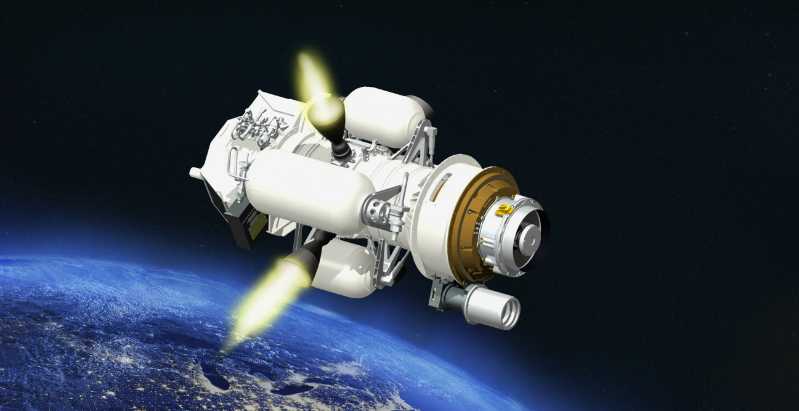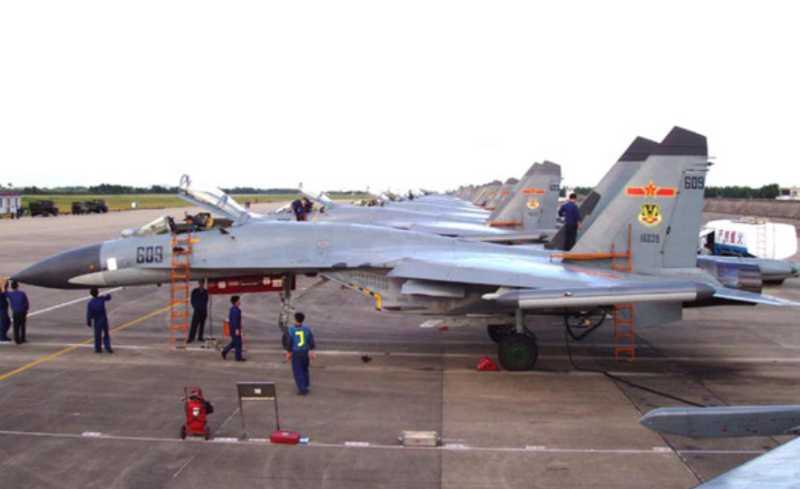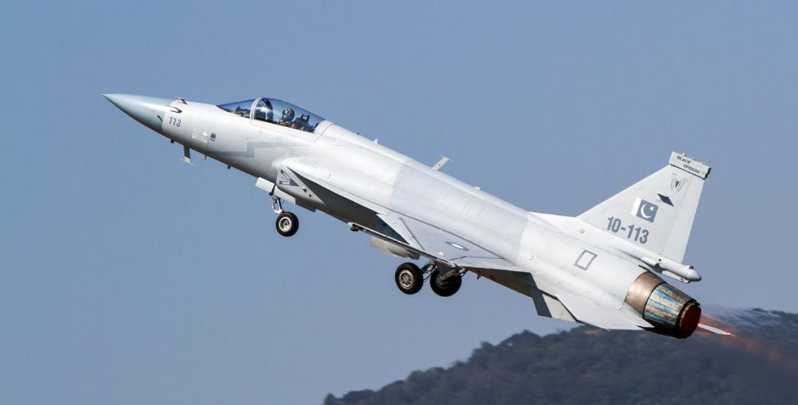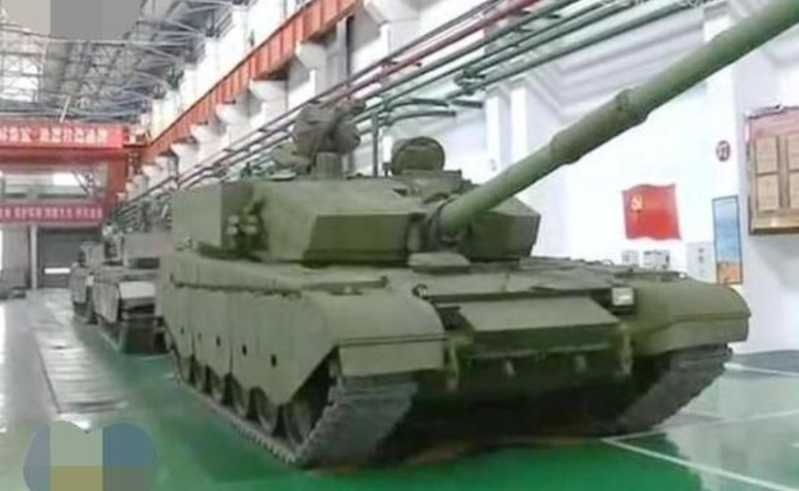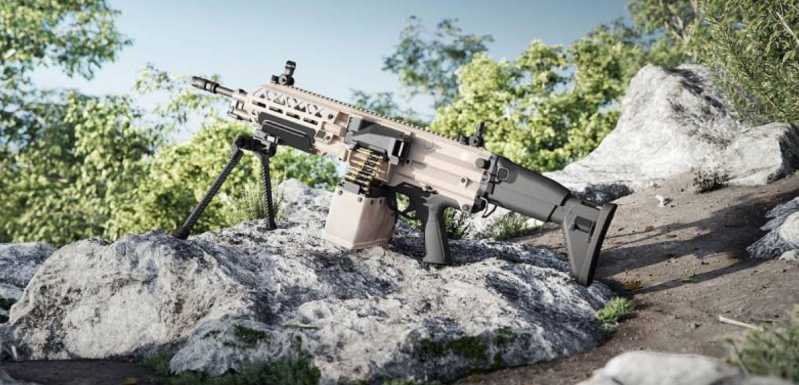The United States is the country with the highest degree of satellite dependence in the world, not only in the field of national security and defense and military, but also in the field of industry and commerce. The countless satellites running in the space orbit take care of the operation of the US economy and society at all times, and can even be said to escort the world’s strongest economy. It is said that even American farmers in one state can get support from 200 artificial earth satellites when sowing wheat and cultivating farmland, using satellite positioning to automate the cultivation of land. It can be said that without the huge number of satellites in orbit and space assets, there would be no prosperity and strength of the United States.
Since launching its first artificial earth satellite in 1958, the United States has realized the extreme importance of protecting satellites as strategic assets. Throughout the Cold War, the United States and the Soviet Union launched thousands of satellites and various spacecraft into outer space. A historian once commented: "Since the first satellites of the Soviet Union and the United States entered space one after another, activities in space outside the Earth’s atmosphere have been linked to various issues such as military competition, national prestige competition, institutional appeal, and cultural superiority. Outer space has changed from a potential Cold War competition venue to an open challenge between the United States and the Soviet Union."
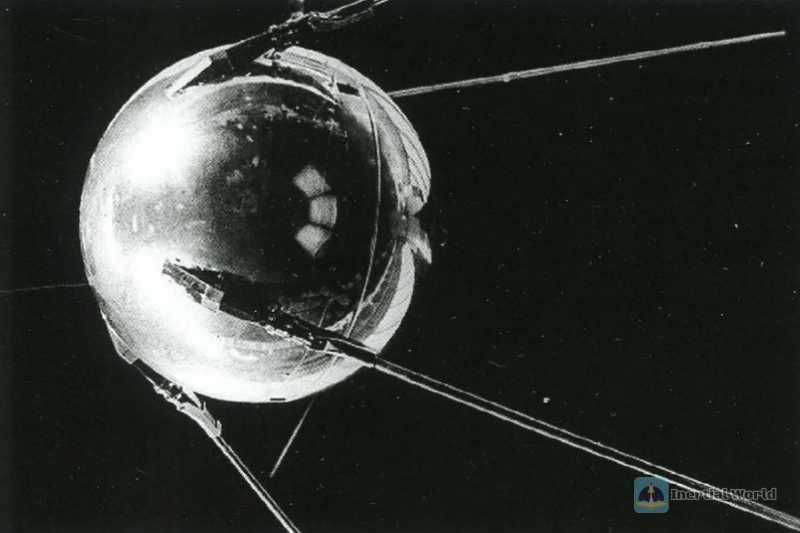
The activities of the United States and the Soviet Union in outer space have expanded the depth and breadth of the Cold War, extending the hostility and confrontation to the fourth dimension of space in addition to land, sea, and air, thereby affecting the change in the overall national security concept of the United States. Influenced by the Pearl Harbor incident, at the beginning of the Cold War, American political leaders, including Eisenhower, were full of fear and imagination about the Soviet Union’s intentions. With the Soviet Union’s "Sputnik" satellite entering space first in 1957, and the Soviet Union’s close pursuit in nuclear technology and carriers, the US government and various think tanks that influence its decision-making have continuously issued various reports on "responding to the threat of Soviet surprise attacks." Among them, various threat-oriented reports on Soviet satellites and speculations about the orbital bombing system (FOBS) being developed by the Soviet Union made the US decision-makers begin to seriously consider how to counter the Soviet threat from outer space.
Against this background, the United States began to study various technologies for intercepting and destroying satellites, and carried out a series of development and testing of anti-satellite weapon systems. However, the development of US anti-satellite technology during the entire Cold War period showed chaos and disorder, so that when the Soviet Union’s "Satellite Killer" anti-satellite system had actual combat capabilities at the peak of the Cold War in the 1970s, the US anti-satellite weapon system was restricted by national strategy and defense policy, domestic politics and diplomacy, fiscal budget and legal factors on the one hand, and the conflict of interests and parochialism among the three services of the army, navy and air force on the other hand aggravated the waste of resources on anti-satellite weapon systems and projects, and fell into the embarrassing situation of "having advanced technology and projects but no substantial implementation". This article focuses on reviewing and revealing the detours and experiences of the US anti-satellite weapon system from the perspective of strategy, technology and related environment during the Cold War.
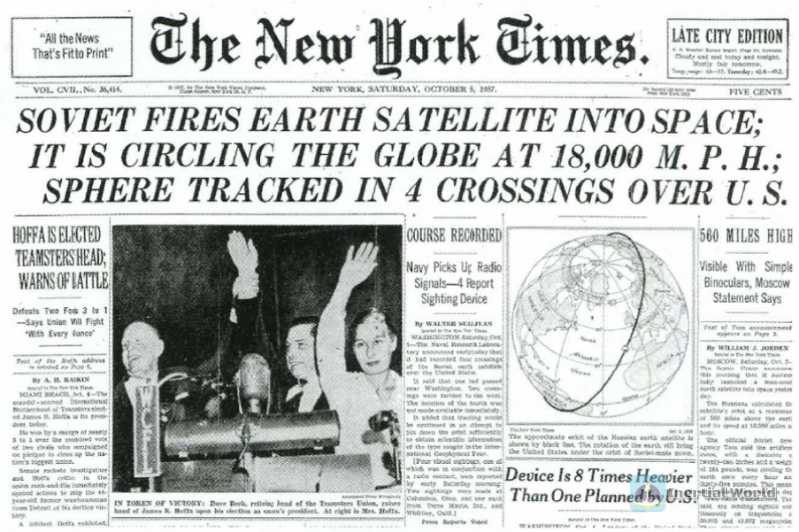
"Saint" satellite interceptor
The SAINT satellite interceptor program (project number 706, codenamed "Saint") originated from a research report on "the concept of an on-orbit satellite surveillance system" by the Aeronautical Research and Development Command in 1956. The US Air Force led the development of the SAINT satellite interceptor, and the preliminary research plan began in 1957. At a national security hearing in the same year, when General Gavin, who was present, stated to the Senate his expectations for the first American satellite to be launched, he foresaw the future prospects and application value of American satellites in reconnaissance, geodesy and mapping, and weather reports. General Gavin also combined the expectations for the US artificial earth satellite with the anti-satellite capabilities of the SAINT program, and directly stated that it was necessary to prevent another country and the camp it represented (referring to the Soviet Union and its Eastern Bloc) from obtaining similar capabilities on the territory of the United States or its allies. At the same time, executives from North American Industrial Corporation proposed a brain-opening "anti-space" action plan, which surprised the senators present.
Just one year later (1958), the National Aeronautics and Space Administration (NASA) reported to Congress on its research on anti-ballistic missile (ABM) and anti-satellite weapon systems funded by the Advanced Research Projects Agency (ARPA) of the US Department of Defense, proposing that in future "anti-space" operations, the development goal of anti-satellite weapons is to "eliminate the information obtained by the enemy through reconnaissance satellites... (not) necessarily destroy it, but make it ineffective, so that the enemy cannot obtain the required information through satellites."
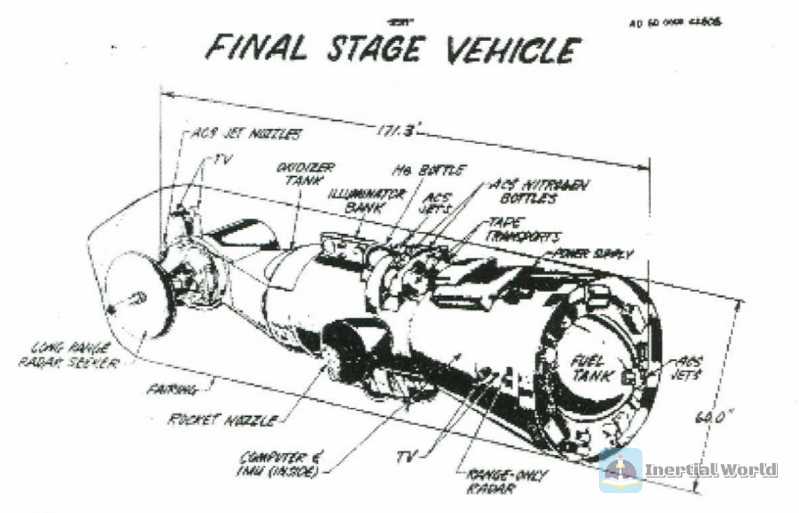
On June 11, 1959, the US Air Force signed a contract with the Radio Corporation of America (RCA) for anti-satellite technology research. On August 20, 1959, the US Department of Defense officially approved the full development of the SAINT satellite interceptor, which was developed by the Air Force Ballistic Missile Department. On April 5, 1960, the U.S. Air Force formally proposed to build a prototype of the SAINT system. The SAINT satellite interceptor uses orbital rendezvous technology for interception, and the IS "Satellite Destroyer" plan that the Soviet Union was studying and demonstrating at the time also used orbital rendezvous technology. The U.S. Air Force envisioned using SAINT as a response and counterbalance to the Soviet Union’s anti-satellite weapons, which could protect the United States’ own satellites and search for nuclear bombing systems that the Soviet Union might deploy in orbit. Through orbital rendezvous, the equipped television camera is used to check and distinguish enemy weather satellites and reconnaissance satellites in orbit. When it is confirmed that enemy satellites, especially spacecraft such as the Soviet orbital bombing system (FOBS), pose a direct threat to the side, they are immediately intercepted and attacked through command control.
SAINT proved its feasibility in intercepting the Soviet orbital bombing system (FOBS) in the initial program demonstration and research, but the accuracy of FOBS’s ground strikes was really questionable. When FOBS arrives at the corresponding orbital attack position, it is attacked and destroyed by a satellite interceptor. Since there was no reliable intelligence showing the Soviet Union’s progress in the orbital bombing system (FOBS), and there was also a lack of reliable and comprehensive intelligence information on the IS "Satellite Killer" being developed by the Soviet Union, the United States was somewhat nervous. Therefore, the US Air Force Ballistic Missile Department, which developed SAINT, decided to adjust and adopt existing mature technologies, especially hardware, and use more ready-made equipment instead of the latest untested technology to reduce the overall development cost and development cycle. In this regard, it is somewhat similar to the idea of the Soviet IS "Satellite Killer" system to maximize the use of mature technologies and existing hardware equipment.
When SAINT entered the prototype manufacturing after the program demonstration research, it encountered many obstacles and pressures from domestic politics, and was also strongly opposed by George Kistyakowski, then special assistant to the president for science and technology, and a group of scientific advisers. When submitting the manufacturing proposal, the US Air Force Ballistic Missile Department had to emphasize the on-orbit monitoring and inspection function of SAINT, and deliberately avoided its core anti-satellite capability. Here, we have to start with the US outer space policy during the presidency of President Eisenhower. Since he was elected president in 1952, Eisenhower has clearly advocated the idea of "great balance" to ensure the balance between the national economy and the military budget based on the sluggish economic situation in the United States, and opposed the expansion of defense spending. This is also evident in the treatment of "militarization of outer space" and "competition in outer space", two key issues related to the development of outer space in the United States. President Eisenhower advocated the policy of "peaceful use of outer space" and the scientific value of developing outer space, rather than military and political value. Although this proposition was criticized by the military at the time, Eisenhower himself was sober. Various intelligence analyses and experience judgments told him that although the Soviet Union had become the only superpower that could rival the United States since World War II, it was not yet an explicit opponent with sufficient restraint, but only a potential opponent that must be contained due to different ideologies.
In other words, the international situation in the 1950s was "one pole was slightly stronger" and had not yet fully entered the pattern of balanced confrontation between the two poles. The Soviet Union’s military strength at that time was simply not comparable to that of the United States. He firmly believed that the absolute advantage of the United States in strategic nuclear power and the main carrier-strategic bombers was enough to ensure the national security of the United States, and there was no need to over-militarize the national economy. This mentality was also reflected in the psychological pattern of the American decision-makers at that time regarding the superiority of Soviet space technology and ballistic missile technology. Objectively speaking, the long-term technological advantage and cultural superiority made the United States despise the efforts of the Soviet Union, and the decision-makers habitually refused to accept any information about the Soviet Union’s technological progress. In Eisenhower’s view, the Soviet Union was very good at using deliberately created illusions: "The Soviets were not only able to use the same aircraft as the United States in the 1955 aircraft air show to create the illusion of a large number of bomber forces, the so-called bomber gap, but even the Americans did not see through this trick at the time." Then, the Soviet Union would use the same blackmail trick to create a "space gap" and a "missile gap" to the United States. Naturally, Eisenhower and his staff would not believe that the Soviet Union might be the first to launch an artificial satellite.

Before the Soviet Union launched the first artificial earth satellite before the United States in 1957, the formulation and implementation of the US outer space policy remained at the level of the three services of the army, navy and air force, and there was no outer space policy at the national level. The outer space projects launched, including intercontinental ballistic missiles, sounding rockets and artificial earth satellites, although they had obvious military colors, did not have an obvious tendency to compete with the Soviet Union in outer space. They were more directly stimulated by the development of military technology during World War II. Therefore, the progress of the US outer space policy at the national level was only to establish a development plan for scientific satellites. Compared with the Army and the Navy, President Eisenhower generally had a good relationship with the US Air Force. The Air Force issued a long list of outer space projects, including anti-ballistic missile projects, anti-satellite projects, and intercontinental ballistic missile projects, which were also praised by Eisenhower at the National Security Council meeting. However, Eisenhower was dissatisfied with the Air Force’s advocacy of accelerating the development of these outer space projects, because he was very disgusted by the Air Force’s blind belief in the militarization of outer space. In this way, if the US Air Force Ballistic Missile Department still emphasized that SAINT was an anti-satellite interceptor when proposing it, it would most likely be put into cold storage and directly cancelled.
Since SAINT was only allowed to have scientific investigations and not anti-satellite functions to cater to political needs, this made the Air Force, which advocated the acceleration of the militarization of outer space, very dissatisfied. Before formally obtaining approval from the Department of Defense and financial appropriations, the US Air Force could only pay all expenses related to its development on its own, and SAINT had to face increasing pressure from within the Air Force. After more than three years of research and demonstration, the U.S. Department of Defense finally accepted and approved the SAINT satellite program. The military and political circles believed that SAINT was only used to track and detect satellites in orbit and to provide additional information support for the operation of ground facilities. In the spring of 1961, the American Radio Corporation (RCA) received a development contract to cooperate with the U.S. Air Force Ballistic Missile Division to manufacture and test the SAINT system.
This ambitious and technically challenging project has undergone three transformations during its development:
Phase 1: SAINT was originally defined as a satellite monitor, launched into orbit using an Atlas Agena B launch vehicle, SAINT can rendezvous with an unknown satellite with a radar cross-section of 1 square meter in an orbit up to 740 kilometers and perform in-orbit detection. Once put into use, SAINT will transmit in-orbit detection data to the North American Aerospace Defense Command (NORAD) in real time.
Phase 2: A semi-actively controlled spacecraft that can make multiple orbit changes in orbit and rendezvous and inspect satellites at altitudes of 1,850 to 7,400 kilometers. The Air Force plans to give SAINT the ability to kill enemy satellites in orbit. SAINT will be equipped with a small spin-stabilized rocket launcher to perform this mission. However, in July 1960, the U.S. Department of Defense reviewed the SAINT proposal report submitted by the Air Force and rejected the idea that SAINT should be equipped with lethal weapons.
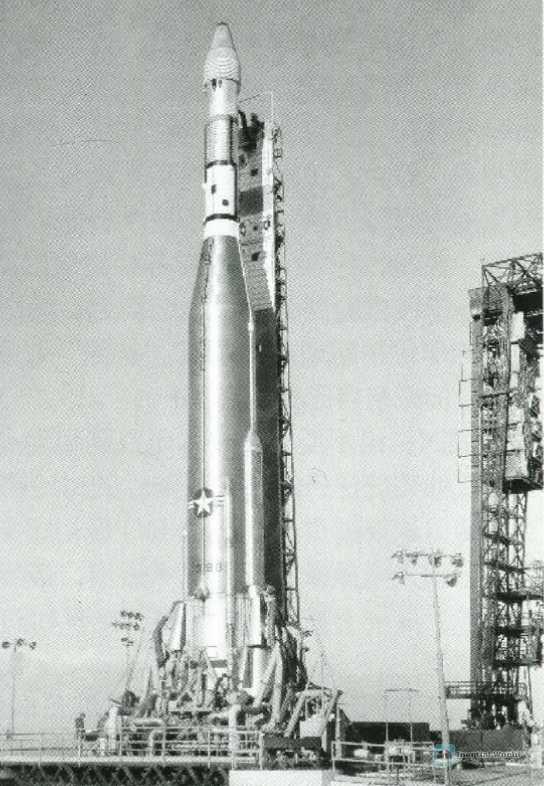
Phase 3: The final form of SAINT development, that is, it is an orbital satellite monitor in peacetime, and immediately transforms into an anti-satellite interceptor in wartime, using direct collision to destroy enemy satellites in terms of killing mechanism. According to the idea of the US Air Force Ballistic Missile Division and the American Radio Corporation (RCA), SAINT will consist of a command and control ground station operated from Colorado Springs, a launch vehicle consisting of the Atlas-Agena first and second stage rockets, and a third stage launch vehicle for in-orbit inspection. The SAINT system will have 19 units/sets before it officially begins operation. By the summer of 1967, the total cost of the program will be US$1.28 billion, and it will form a full combat capability. The US Department of Defense instructed the Air Force to use its own internal funds to complete this project.
In 1960, when discussing the US proposal for the Satellite Monitor (SAINT) program, a project member said bluntly: "The Soviet Union has also been considering a similar system. Some American scientists involved in the SAINT program have inferred that by 1963, the Soviet Union will have anti-satellite capabilities, and non-nuclear anti-satellite combat capabilities." After Kennedy took office as the new US President in 1960, he immediately set about revising the US outer space policy. This Democrat, using the "Soviet artificial satellite incident" and the US-Soviet "outer space gap" debate, successfully defeated Eisenhower and Vice President Nixon in the presidential election, pushing the US outer space policy onto the path of an arms race with the Soviet Union, becoming an important part of the US-Soviet Cold War. It was during the Kennedy administration that the US militarization of outer space also entered a period of mature and stable development in terms of management, system, and specific R&D projects. If SAINT was required to delete its anti-satellite capability because of the "peaceful use of outer space" during the Eisenhower era, then in the Kennedy era, it should be truly implemented under the drive of the militarization of outer space policy, which makes sense in the overall environment and logic. However, history did not give SAINT a chance to land! Although the new Secretary of Defense McNamara also expressed his position on the anti-satellite issue: "If the Soviet Union or any other force starts to target our satellites, we should have the same ability to respond with courtesy." Air Force Secretary Zuckert also supported this position and also intentionally or unintentionally stated that SAINT should be the basis of the United States’ anti-satellite technology capabilities. However, it was not until 1968 that the Soviet Union began to use the newly developed IS "Satellite Destroyer" to conduct a series of anti-satellite tests unprecedented in the world, and until 1976-1977 that the United States’ anti-satellite weapons really had the most fundamental basis for landing.
In the end, due to the lack of strong financial and political support, as well as some difficult-to-overcome technical complexities, the international legal impact of space on-orbit inspections, and the fear of Congress about inciting a space-based anti-satellite competition, President Kennedy and Secretary of Defense McNamara were worried that the deployment of anti-satellite weapons in space would intensify the space confrontation with the Soviet Union and would not be conducive to the United States’ main direction of defeating the Soviet Union in terms of national prestige and institutional cultural appeal with the "Moon Landing Program". Later, the United States encountered many obstacles and interference in the development and testing of anti-satellite missiles with nuclear and conventional warheads. Compared with the technical level, it was more due to policy and legal entanglements. After the Soviet Union completed the first phase of the IS "Satellite Destroyer" test in low-Earth orbit in the early 1970s and announced the test results, the Americans realized that they could have obtained anti-satellite capabilities to compete with the Soviet Union through SAINT "Saint" in the early 1960s, but they had no choice but to give up first!
At the same time, due to the discussion and dialectic of the public possibility that anti-satellite technology can use the existing missile defense system to complete the task more easily and more conveniently, the support for SAINT inside and outside the Air Force has become less and less. Even the on-orbit detection function originally defined by SAINT, due to the technological progress of the ground telescope electro-optical camera system, was eventually considered to be a more effective and politically favorable choice in identifying unknown satellites and characterization... SAINT was officially cancelled in 1962.
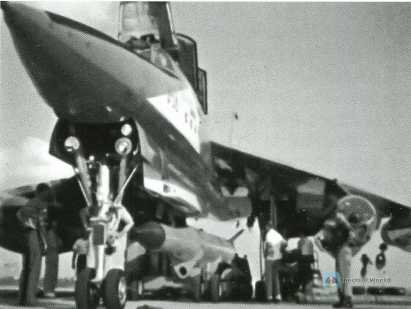
Inspired by the Soviet leader Khrushchev’s preparation to deploy a space bombing system equipped with nuclear weapons into orbit, the anti-satellite program and project launched by the United States in 1959 also included anti-satellite missiles. Benefiting from the development of missile defense technology during the same period, the U.S. Air Force and the U.S. Army conducted research and demonstration on anti-satellite missiles based on their respective strategic missile systems. WS-199 is a strategic-level weapon development program (divided into 199B and 199C) that the U.S. Air Force conducted demonstrations in the 1950s. It aims to research and develop a new strategic weapon system for strategic air strikes. The United States pioneered the basic concept of using air-launched ballistic missiles as nuclear strikes. On the one hand, based on its strong aviation industry foundation and absolute advantages in bomber technology, it can quickly form a powerful nuclear strike capability. The gap between the United States and the Soviet Union in air-based strategic strike capabilities confirms this. On the other hand, research and demonstration found that because air-launched ballistic missiles are launched from high-altitude aircraft, they can obtain high initial velocity and altitude, can use smaller body size and weight, can carry more fuel, and can better overcome the aerodynamic drag generated by passing through the low-altitude atmosphere with the same equivalent warhead (compared to launching from land-based and sea-based platforms) to perform the same range mission. Air-launched ballistic missiles have a certain height and initial velocity, which greatly shortens the time the active phase engine works, thereby reducing the time the missile is tracked and identified by the early warning satellite, and using the blind spot of the ground long-range tracking early warning radar to increase the probability of successful penetration. Ballistic missiles deployed on airborne platforms can maintain patrol status for a long time, are not easily destroyed when on combat readiness duty, and improve the survivability of missiles. These advantages have also become the theoretical and technical basis for the US Air Force to vigorously develop anti-satellite missiles.
Project 199B is the "Orion" air-launched ballistic missile (ALBM) designed by Glenn Martin for the B-47 Stratosphere bomber. The overall design of the missile is very simple, and a large number of components from other missile systems are used to reduce the cost and development time of the project. The initial model of "Orion" only used a single-stage Thiokol TX-20 Sergeant solid fuel rocket. After preliminary testing, "Orion" was changed to a two-stage rocket, using the upper stage of the "Altair Rocket" developed by the Allegheny Ballistic Laboratory (ABL).
The U.S. Air Force attached great importance to the development and testing of this air-launched ballistic missile. On May 26, 1958, the first flight test of "Orion" was carried out by a B-47 stratosphere bomber. The B-47 launched "Orion" at the top of a high-altitude, high-speed, high-angle climb, and the thrust of the missile’s own rocket engine enabled the missile to reach its maximum range and enter space. "Orion" conducted 12 flight tests, however, although it experienced only one complete failure, the initial flight test of the single-stage rocket proved not as successful as expected. The final plan converted "Orion" into a two-stage rocket. In addition to improving the reliability of the missile, the U.S. Air Force increased the range of "Orion" to more than 1,000 miles (1,600 kilometers). Four of the last six test launches used two-stage rockets. These test launches were considered completely successful, establishing "Orion" as the first air-launched ballistic missile and proving its reliability as an anti-satellite vehicle.
The last launch flight test on October 13, 1959 finally tested the anti-satellite capability of "Orion": a missile without a nuclear warhead was launched from a B-47 at an altitude of 35,000 feet (11,000 meters). The impact point was set in the area near Varatis Island, 500 kilometers north of Cahuilla. At the same time, "Explorer 6" as the target satellite passed through the area at a speed of 28,967 kilometers per hour in a perigee orbit at an altitude of 156 miles (251 kilometers). After continuous reconnaissance by ground radar stations, the Air Force confirmed that the "Orion" missile successfully intercepted the "Explorer 6" satellite, and rendezvoused with the target at a range of less than 4 miles (6.4 kilometers) at an altitude of 156 miles (251 kilometers), thus verifying the feasibility of intercepting satellites with air-launched ballistic missiles.
"Virgo" missile
In response to the WS-199 program and in order to compete with Glenn Martin, Lockheed and General Dynamics Convair also proposed an air-launched ballistic missile development plan (i.e., the 199C program, code-named "Virgo"). The "Virgo" missile also uses a single-stage Thiokol TX-20 Sergeant solid-fuel rocket, and makes extensive use of mature components in existing missiles to reduce overall costs and risks. In order to enhance the competitiveness of the project, Lockheed equipped the Virgo with the then-advanced inertial guidance system N5G, which was derived from the AGM-28 HoundDog air-launched cruise missile. Through the Colesman star tracker and celestial observation equipped on the carrier, the directional error of the inertial navigation system was corrected to help the US strategic and tactical bomber groups successfully penetrate the increasingly advanced surface-to-air missile firepower network of the Soviet Union at that time. Convair was responsible for developing a pylon for carrying and launching the Virgo missile, which would be installed on the B-58 bomber (to compete to replace the B-47 bomber). The Virgo missile conducted four flight tests (two successful, one failed, and one unknown). The anti-satellite test was also scheduled for the last flight, and a camera was installed on the missile to record the test results.
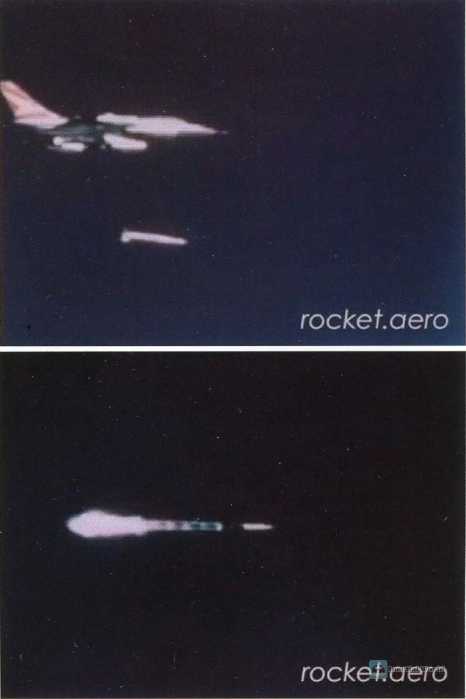
On September 22, 1959, the Virgo missile was launched from a B-58 bomber at a speed of Mach 2 and rushed to a far-earth orbit at an altitude of about 12,000 meters. However, less than a minute after launch, the telemetry signal was lost, and the missile was later proven to have crashed. The camera used to record the test data was also lost along with the data generated, so the flight test had no results.
In the late 1950s, the air-launched anti-satellite missile tests were all considered based on the nuclear warhead killing mechanism, even in the mid-1960s when land-based missiles were used for anti-satellite tests. As early as the two high-altitude nuclear explosion tests conducted in 1958 and 1962 (marked as Hardtack Teak test and Starfish Prime test in the US archives), scientists and military observers noticed the great destructive effect of electromagnetic pulse (EMP) caused by nuclear explosions on communications and electronic equipment. In the high-altitude test in 1962, the electromagnetic pulse detonated by a 1.4-megaton TNT warhead over the Pacific Ocean paralyzed one-third of low-orbit satellites, and the other seven satellites lost their ability to work (including the US Navy TRAAC satellite and Transit 4B navigation satellite), and also interrupted power transmission and communications throughout the Pacific Ocean. The radiation belt formed by the nuclear explosion also damaged the commercial data relay communication satellite Telstar (the world’s first commercial satellite) and the British Ariel1 satellite (the first artificial earth satellite in the UK) that were in orbit at the same time. It can be seen that if an anti-satellite missile with a nuclear warhead explodes in space, it will destroy its own satellite while destroying the enemy’s satellite.

Anti-satellite missiles, even if they could use non-nuclear warheads and precision guidance systems in the 1950s, would be difficult to gain high-level approval in the domestic political and diplomatic public opinion environment of the United States at that time. After World War II, the United States’ fear of "surprise attacks" was exacerbated by the "closed" nature of Soviet society. Because of the extremely strong desire to avoid a "nuclear Pearl Harbor", Eisenhower proposed "open skies" in July 1955, suggesting that the United States and the Soviet Union exchange information about their respective military structures and allow unlimited overflight of each other’s airspace for confirmation. However, the Soviet Union rejected this suggestion, and the United States had to pin its hopes on the secret operations of U2 reconnaissance aircraft and efforts to establish "space freedom" with satellites. The Eisenhower administration tried to use space as a neutral place for all countries to use. The main reason for doing so was that the relationship between the United States and the Soviet Union was generally in a relatively relaxed state at that time. Although the US Central Intelligence Agency had compiled and submitted many intelligence reports on the Soviet Union’s possible use of ballistic missiles to launch satellites through various channels, it prompted Eisenhower to... The Eisenhower administration was able to pay attention to this.
Later, the Soviet Union also successfully launched co-orbital anti-satellite interceptors into orbit with ballistic missiles many times, which shocked the United States again. However, the "Killian Report" submitted by the famous scientist James Killian, the first scientific advisor to the President of the Eisenhower administration, suggested that the president establish outer space policy based on "space freedom". President Eisenhower was very interested in the concept of "space freedom" proposed in the "Killian Report" and organized four National Security Council meetings for discussion. Finally, the core ideas of outer space policy of "peacemaking" and "non-competitiveness of outer space" were established, and only the basic proposition of "using outer space as a means for the United States to obtain national strategic intelligence" was retained until the Soviet "Sputnik" incident on October 14, 1957. After the incident, it was not fundamentally shaken. Then, the anti-satellite missile test was regarded by the political top brass and Congress as "hints of hostile intentions and actions between countries" and "inducing space competition and even war" and was opposed. Soon thereafter, the development of anti-satellite missiles was restricted.
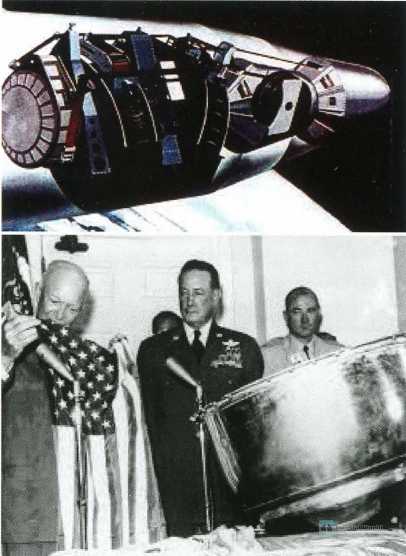
Since the 1950s, the United States has begun to expand its military activities into space in order to provide support and support in its global confrontation and conflict with the Soviet Union. Initially, the primary purpose of the United States in developing military artificial earth satellites was to obtain strategic intelligence and information that was difficult for tactical aircraft or personnel to obtain. The infinite military potential and application value brought by satellites, and later as the United States’ aerospace strength continued to improve, satellites with the ability to provide remote sensing information, full-time and full-domain communications, navigation and timing, intelligence collection and reconnaissance, and global space positioning have truly become an indispensable part of the US armed forces. The US military has realized that developing a complete set of anti-satellite weapon systems and combat systems is the most effective and direct means to defend its own satellites and strategic security.
When U.S. Secretary of Defense McNamara was in charge of the Department of Defense, he tried to reorganize the Department of Defense’s management agency for national security space projects to improve operational efficiency and budget supervision power. He designated the Air Force as the main executive agency for the Department of Defense’s space projects (this decision was abolished in the 1970s, but then restored in 2003). The Army, Navy and other services continued to be responsible for the completion of ongoing military space projects. The main reason for this was that the military application of various spacecraft, including artificial satellites, was still in the initial exploration stage. In the process of leading the reform of the national defense system, McNamara ended the repeated waste and chaos of the U.S. Army, Navy and Air Force in R&D projects through a series of governance. At the same time, he completely changed the nuclear-first "massive retaliation strategy" adhered to by the Eisenhower administration. He began to emphasize the non-nuclear capabilities of the U.S. military around the limited war capability plan, and built multiple capabilities and means for both nuclear war and conventional war and special war. In summary, it became the Kennedy administration. The "flexible response strategy" advocated by the US government during the Eisenhower administration.
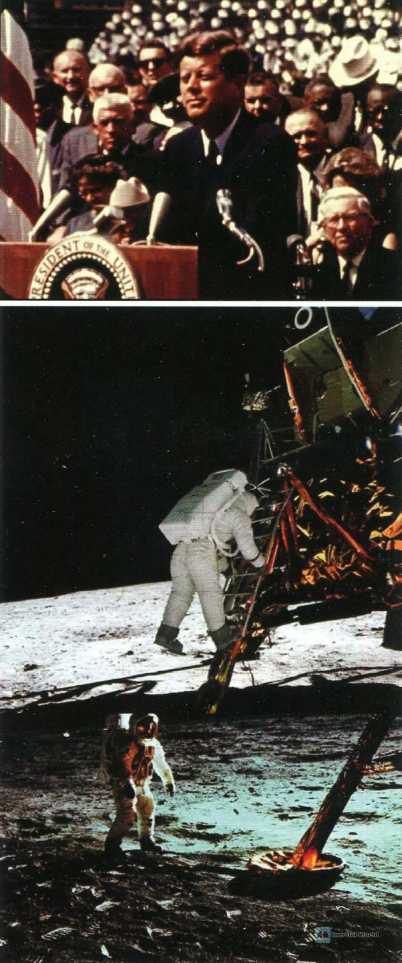
As for the military aerospace projects in the hands of the three armed forces, there is no mature theoretical and ideological guidance as a basis for the time being, and there is no formation in equipment and system construction. Unified pace, let alone the idea of reforming and reorganizing conventional military forces to unify the development of anti-satellite weapon systems. After research and evaluation, McNamara finally decided to retain the power of each service to explore aerospace systems that meet its actual needs, allowing them to develop with a certain degree of freedom under the full supervision of the Department of Defense, and anti-satellite weapons are naturally no exception. During this period, some people suggested the establishment of an independent space command responsible for military aerospace activities and projects, but due to the drive of military parochialism and interests, it was not realized.
At the same time, the Soviet Union received long-term and comprehensive care from the Soviet supreme leaders and the Central Council of Ministers of the Communist Party of the Soviet Union in terms of resources, systems and decision-making in the development of anti-satellite weapon systems, which enabled it to concentrate scientific and technological forces and resources and promote it from the perspective of national strategic security. The Soviet Union not only took the lead in the early stages of military aerospace and space competition, but also in the development of anti-satellite weapon systems. In terms of the development and establishment of professional anti-satellite combat and support forces, the United States is also 10 to 20 years ahead of the United States.
In addition to air-launched ballistic missiles, the United States also tried to use land-based rockets and missiles as launch platforms for anti-satellite weapons. In the late 1950s, the U.S. Army envisioned using the Agena B rocket to send an interceptor into satellite orbit to destroy the target satellite. This idea originally originated from the Army Ballistic Missile Agency’s relatively mature Redstone missile and Orbital satellite program under the leadership of former Nazi German rocket scientist von Braun. It would have enabled the United States to launch satellites by the end of 1955. However, the policy considerations of "space freedom" at the time eventually pushed the Redstone missile (a large number of designs came from the German V2 missile) and the Orbital satellite into the cold palace. The United States did not use the ballistic missiles that were most likely to be successfully launched as satellite launch vehicles like the Soviet Union, and was eventually taken the lead by the Soviet Union in the space race. However, the U.S. Army discovered the similarities between anti-satellite and ballistic missile interception technologies from Redstone. Based on this technical route, it developed an anti-satellite missile based on the Nike-Zeus anti-missile missile. The Nike-Zeus anti-missile missile originated from an air defense missile system developed by the U.S. Army Department in 1944 during World War II. It is used to intercept bombers flying at a speed of at least 800 kilometers per hour and an altitude of 20,000 meters. It serves as the last line of defense against air raids to protect cities and important military facilities. The Nike-Zeus anti-missile missile has developed two types, the A type and the formal B type, and conducted 19 test launches between 1959 and 1963. The original Nike-Zeus A was designed to intercept warheads in the upper atmosphere and was equipped with a 25-kiloton TNT equivalent W31 nuclear warhead. During the development process, the concept changed to protect a larger area and intercept enemy ballistic missile warheads at a higher altitude. This required the missile to expand to a completely new design - Zeus B, equipped with a 400 kiloton W-50 warhead, and using a more sophisticated and advanced tracking and guidance system and a new electronic scanning phased array radar. In several successful tests, the B missile was proven to be able to intercept warheads and even satellites. Initially, due to the high requirements of anti-missile technology, the technical reliability defects of the "Nike-Zeus" system itself, the limitations of the defense budget, and the differences among the various services within the Joint Chiefs of Staff, the Kennedy administration rejected the Army’s request to deploy the system, but allowed it to continue research and development and testing. The shortcomings and defects of the "Nike-Zeus" system prompted the Army to launch the updated Nike X system in 1962, and continued to improve it. The reliability and effectiveness have been greatly improved, and theoretically it has a stronger anti-missile defense capability (it can intercept warheads that have not been successfully intercepted in space at the terminal). In January 1960, the U.S. Army submitted a proposal to the Department of Defense, "Land-based anti-missile systems and anti-satellite weapons have many common features. Both systems require accurate and timely target tracking and guidance systems and rapid response or launch capabilities. There are overlaps in the early warning monitoring, command and control, and interception and strike subsystems. Nike-Zeus can protect the United States from Soviet intercontinental missiles and space attacks. It can be deployed using the missile defense facilities that are about to be built, and will not increase costs."
After dialectical discussions between the U.S. Department of Defense and Congress, in April 1962, the U.S. Department of Defense approved the use of Nike-Zeus for anti-satellite tests. The U.S. Army modified the Nike-Zeus B anti-ballistic missile. The anti-satellite model of Nike-Zeus B was named DM-15S, code-named "Goddess of Victory". The modified missile has a maximum interception altitude of 560 kilometers and can be equipped with a W-50 nuclear warhead (20,000 tons of TNT equivalent). Nike-Zeus B is a two-stage missile equipped with a solid rocket engine and has an almost instantaneous launch capability. After several rounds of test launches, the DM-15S proved its ability to intercept spacecraft that were changing their orbits. On July 19, 1962, the DM-15S successfully intercepted the re-entry stage of an Atlas D ballistic missile launched from Vandenberg Air Force Base in California. In May 1963, Nike-Zeus successfully completed an anti-satellite simulation test. In the test, the simulated target was an Agena-D satellite, 172 kilometers away from the launch site and flying at an altitude of 128 kilometers. The Nike-Zeus DM-15S verified the technical feasibility of attacking low-orbit satellites in the test. By July 1963, the Nike-Zeus DM-15S had successfully intercepted re-entry vehicles 13 times in a row, and the distance accuracy deviation from the interception target was kept within 1 kilometer.
Although there was no actual nuclear explosion interception test equipped with nuclear warheads, the US Air Force had verified the lethality of nuclear explosions to satellites in an exoatmospheric test as early as 1962. In view of this, the U.S. Department of Defense ordered on June 27, 1963 that the Army should keep the Nike-Zeus DM-15S equipped with the W-50 nuclear warhead on full-time standby. On August 1 of the same year, the U.S. Army officially announced that the Nike-Zeus DM-15S "Victory" was on combat readiness, thus enabling the United States to obtain a practical nuclear anti-satellite capability for the first time.
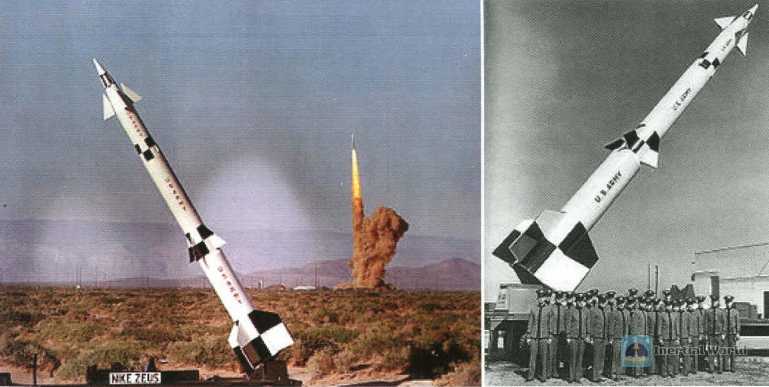
On September 17, 1964, President Johnson revealed the results of the anti-satellite test to the media and the public during his campaign trip in Sacramento, California. This was also the first time that the American public learned about the existence of anti-satellite weapons. The day after the news was revealed, Secretary of Defense McNamara announced at a press conference that the United States had tested an anti-satellite missile and successfully intercepted a simulated enemy orbital satellite within its effective killing radius. The two public announcements were a response to the speculation and fear of a "Soviet raid" among the American public at the time, and showed the public that the United States already had the ability to counter the "space threat" from the Soviet Union.
However, the parent system of DM-15S, "Nike-Zeus", became the subject of fierce competition between the Army and the Air Force during its development cycle. As early as 1958, when the U.S. Army was given an anti-missile mission by the Department of Defense, the U.S. Air Force began to launch a series of criticisms of the "Nike-Zeus" system in the defense and press circles. The U.S. Army responded to the "political" attacks of the U.S. Air Force in kind, and even published a full-page advertisement about the "Nike-Zeus" system in a popular news magazine in the United States. In addition, brochures printed with "Nike-Zeus’ successful defense against Soviet satellite and ballistic missile attacks" were distributed in many states to gain maximum political support. During the development and testing of Nike-Zeus, the ballistic missile threats faced by the United States were as great as those faced by the United States. The nature of the war has changed fundamentally. According to the intelligence held by the US military intelligence department, it was originally expected that only dozens of intercontinental ballistic missiles would be faced. Therefore, it is feasible to establish a "Nike-Syns" anti-missile system across the country, although the cost of such a comprehensive defense would be very high. In 1964, the Chairman of the Joint Chiefs of Staff, Army General Earl Wheeler, proposed to Secretary of Defense McNamara the need to maintain a balance between strategic offensive and defensive forces, and pointed out that "when we have a relatively strong strategic offensive force, if we cannot establish the ability to resist ballistic missiles, we cannot achieve a balance between strategic offensive and defensive forces."
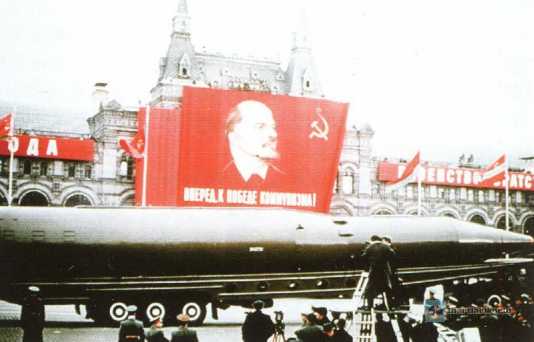
After the Soviet Union successfully launched two artificial satellites into space in October and November 1957, the American people’s fear of a Soviet surprise attack grew day by day. The subsequent development and launch of the Soviet Union’s second-generation intercontinental ballistic missiles, when the Soviet Union announced that it would manufacture hundreds of missiles and developed intercontinental missiles carrying multiple warheads, the United States faced the problem of building and deploying a sufficient number of "Nike-Zeus" missiles to correspond to them and being able to successfully intercept multiple warheads at one time. So the U.S. Department of Defense discussed with the Army whether to reposition "Nike-Zeus" to protect the bomber bases of the Strategic Air Command and ensure that the retaliatory strike force can survive the Soviet nuclear strike. The U.S. Air Force argued that "anti-ballistic missiles are ineffective and costly", and the cost of defense is much higher than the cost of attacking. The Air Force can maintain its strategic strike advantage over the Soviet Union by developing and deploying better-performing strategic bombers and intercontinental ballistic missiles. Secretary of Defense McNamara focused on improving the level of offensive strategic weapons to achieve the strategy of "ensuring destruction" and "limiting damage". Faced with the increasingly large and advanced Soviet nuclear arsenal, he was not optimistic about the role of the land-based anti-missile system, which was not yet mature in technology, in the short term, and was more inclined to develop a more advanced and more survivable strategic strike force. Although the development of an effective anti-missile system has always been an urgent matter, it is not hoped that the system will occupy too much of the defense budget.
The missile part of the "Nike-Zeus" system has quite high typical performance indicators in terms of engine thrust (2000 kN), flight limit (280 km) and maximum speed (greater than Mach 4, 4900 km per hour), and is in space targets. The surveillance radar used the most advanced active phased array technology at the time, but because this technology was advanced but immature at the time, the space target surveillance radar of the Nike-Syns system could simultaneously track and detect a very limited number of incoming ballistic missile warheads, and its ability to process and identify warhead signals was also insufficient. Similarly, the number of low-orbit satellites that could be intercepted was also very limited. In view of this, the developer, Bell Labs, proposed to develop and update new computers and tracking detection radars with high processing speeds, and tried to set up an automatically updated active radar seeker on the basis of the Zeus B missile to improve the angular resolution and expand the maximum effective range. However, it turned out that the seeker was too large to be used.
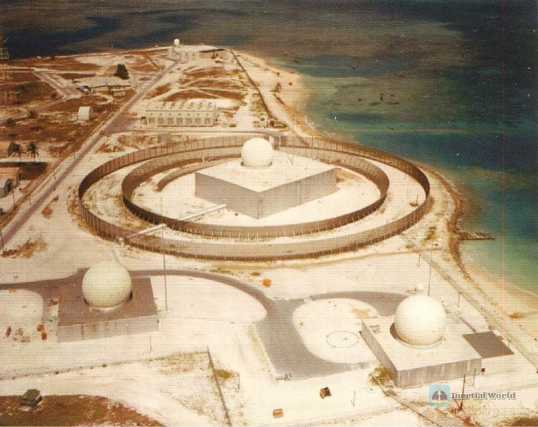
In fact, McNamara made a comprehensive consideration of the deployment cost, the review and appropriation from Congress, and the pressure factors of defense budget control. After discussing with President Johnson, he finally decided that the Nike-Zeus system would never be deployed. It cannot be deployed in practice and can only be maintained at the level of research and development and testing. Later facts proved that the United States and the Soviet Union agreed to limit anti-ballistic missile defense as part of the framework of the arms control treaty. The United States actually abandoned the land-based anti-missile defense system and chose to rely on the establishment of a more powerful and advanced strategic offensive force. The 1972 US-Soviet Anti-Ballistic Missile Treaty and the 1974 Supplementary Protocol limited the anti-missile deployment of both parties to one site. However, McNamara did not completely reject the Nike-Zeus system. When he signed in 1962 to agree to continue to provide research and development funds (but refused to provide production funds), he said: "The successful development of Nike-Zeus may force the Soviet Union to spend more resources to increase its intercontinental ballistic missile force.
For potential adversaries, this will also make it more difficult for them to accurately estimate our defense capabilities and complicate the completion of a successful attack. The protection it provides is always better than no protection. "McNamara also continued to invite an anti-missile research group of ARPA to evaluate the Nike-Zeus system. The agency submitted a final report in April 1962, affirming the possible role of Nike-Zeus in anti-missile defense. It mentioned that the Nike-X equipped with active electronically scanned array (AESA) and Sprint hypersonic missiles would be developed on the basis of the Nike-Zeus system. It could not only intercept the new Soviet intercontinental missiles equipped with multiple warheads and decoys that attack domestic air bases and important military facilities, but also rely on the missile defense facilities under construction to develop anti-satellite technology to counter the surveillance and reconnaissance of Soviet spy satellites on the strategic strike force of the US mainland. Nike-X gradually developed into the only anti-missile defense forces of the United States in the 1970s during the administrations of Johnson and Nixon. "System, they were only deployed in small quantities. After the signing of the Strategic Arms Limitation Treaty between the United States and the Soviet Union in 1972, the final version of the "Guardian" system left only one operational facility, located near Grand Forks, North Dakota, which was closed in 1975.
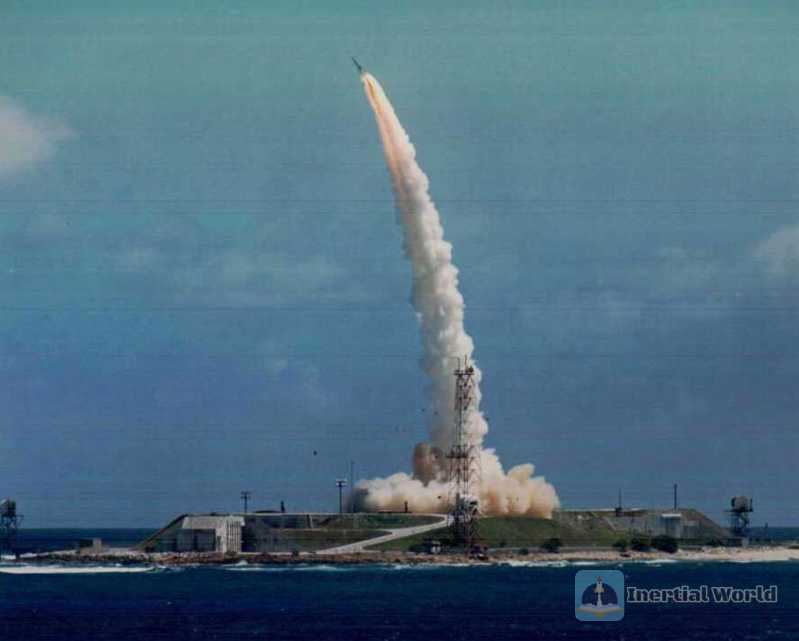
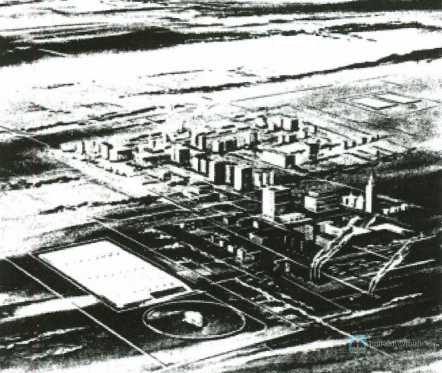
To be continued


